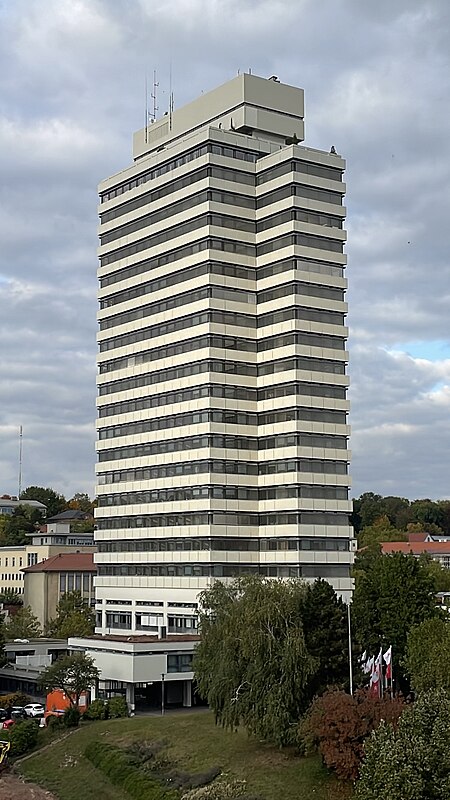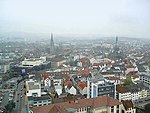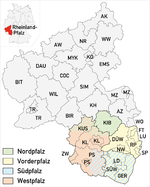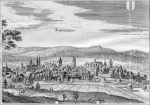Kaiserslautern Town Hall
Buildings and structures in KaiserslauternCity and town halls in GermanyRhineland-Palatinate building and structure stubs

Located in Kaiserslautern Germany, Kaiserslautern Town Hall (Das Rathaus) is one of the tallest town halls in Germany. The building was put in service in 1968. Kaiserslautern City Hall has 25 stories above ground, of which the three uppermost ones are only used as storage room or for operational devices. The building is 84 meters tall and has four elevators. It is the tallest building in Kaiserslautern and on the 21st floor is a restaurant and public observation deck.
Excerpt from the Wikipedia article Kaiserslautern Town Hall (License: CC BY-SA 3.0, Authors, Images).Kaiserslautern Town Hall
Willy-Brandt-Platz, Kaiserslautern Kaiserberg
Geographical coordinates (GPS) Address Phone number Website External links Nearby Places Show on map
Geographical coordinates (GPS)
| Latitude | Longitude |
|---|---|
| N 49.446666666667 ° | E 7.7677777777778 ° |
Address
Rathaus Kaiserslautern
Willy-Brandt-Platz 1
67657 Kaiserslautern, Kaiserberg
Rhineland-Palatinate, Germany
Open on Google Maps







